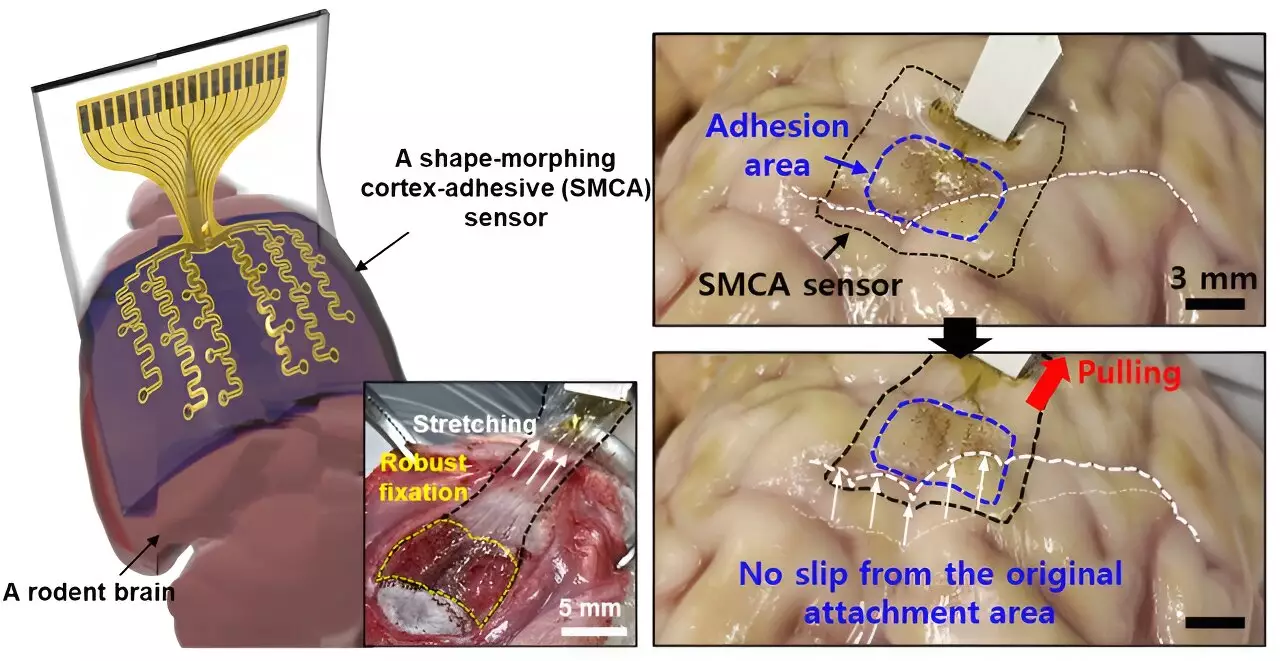Transcranial focused ultrasound represents a revolutionary stride in the field of neurology, offering a non-invasive avenue for treating various cerebral disorders through targeted stimulation of brain regions using high-frequency sound waves. This innovative technology has garnered particular attention for its potential to address complex issues such as drug-resistant epilepsy and persistent tremors. Researchers across South Korea have embarked on a groundbreaking journey, culminating in the development of an advanced sensor designed to optimize the effectiveness of this method, as detailed in a recent publication in *Nature Electronics*.
Previous innovations in brain sensors faced a fundamental limitation: accurately adhering to the intricate folds of the brain. Donghee Son, the supervising author of the study from Sungkyunkwan University, highlighted the inadequacies of earlier technologies which struggled to maintain a secure attachment on surfaces with complex topographies. Earlier prototypes, although innovative, were susceptible to slippage caused by the rhythmic motion of the brain and the dynamics of cerebral spinal fluid, impairing their functionality and reliability in medical contexts. This inherent instability presented a significant barrier to consistent data collection, which is paramount for effective diagnosis and treatment.
The newly developed sensor, referred to as ECoG (electrocorticography), aims to navigate these pitfalls, establishing a robust adhesion that mitigates external noise interference and promotes reliable long-term monitoring of neuronal activity. This advancement is instrumental in enhancing therapeutic approaches, particularly for epilepsy management, as it allows for precise ultrasound stimulation over extended periods, fundamentally reshaping patient care practices.
The architecture of this novel sensor comprises a sophisticated tripartite structure designed to optimize absorption and adherence to neural tissue. The first layer, crafted from a hydrogel, creates a dynamic bond with brain cells, facilitating both chemical and physical connectivity. Following this, the self-healing polymer layer actively morphs to fit the brain’s unique contours, adapting in real-time to maintain contact. Finally, an ultrathin layer composed of gold electrodes not only enables efficient electronic communication but is also engineered to withstand the mechanical vibrations that can disrupt sensitive measurements.
Son articulates the elegant functionality of this sensor: “Upon application, the hydrogel layer quickly becomes bonded to the brain surface, allowing the subsequent polymer layer to conform precisely to the contours of the brain, thereby optimizing sensor performance.”
One of the most pressing challenges in treating neurological disorders has been the individual variability among patients. The traditional methods have typically failed to keep pace with the nuances of different brain conditions, making it increasingly difficult to tailor interventions effectively. The innovative sensor’s capacity to minimize noise and reliably capture real-time brain wave data during ultrasound stimulation could pave the way for personalized treatment strategies customized to each patient’s unique needs.
Son’s research team notes that understanding these real-time dynamics is crucial: “Our design significantly reduces environmental noise, fundamentally changing the landscape for tailored treatment in conditions like epilepsy where precision is vital.”
Initial tests of the ECoG sensor on living rodents have yielded hopeful results. The capability to accurately measure brain activity and manage seizure episodes indicates the sensor’s transformative potential. As the research evolves, the team envisions scaling the technology into a high-density array, unlocking even greater possibilities for both diagnosis and treatment of neurological disorders.
The implication of this advancement extends beyond epilepsy. The foundational technology has the potential to revolutionize interfaces in prosthetic devices, offering a novel solution to existing challenges in brain-computer interaction. The enhanced sensor’s capacity for detailed brain signal analysis can lead to more effective interventions across a spectrum of neurological disorders.
The development of the shape-morphing, cortex-adhering sensor represents a critical milestone in neurological therapeutics. By seamlessly integrating technological innovation with a deep understanding of cerebral dynamics, researchers have successfully addressed longstanding challenges in brain signal measurement and treatment applications. With further clinical trials on the horizon, this breakthrough promises not only to transform epilepsy treatment but also holds the potential to improve diagnostics and interventions for a broad range of neurological conditions. As researchers continue to refine and expand upon this technology, the future of personalized neuroscience looks increasingly bright.


Leave a Reply